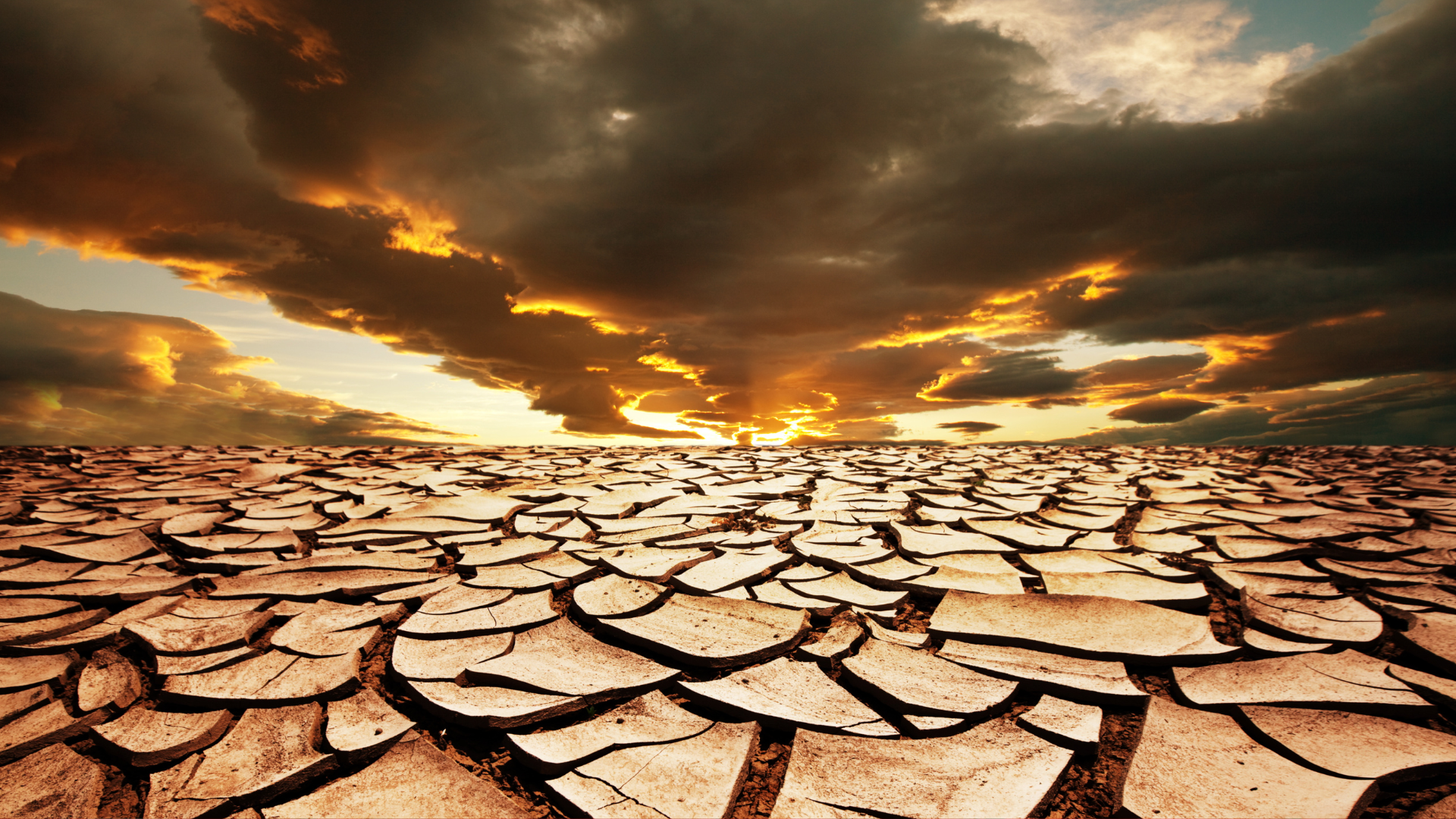Human caused environmental changes, while felt everywhere, manifest differently by location. A forest you once explored on the periphery of New York State’s Adirondack Park may have large clearings from decreased fracking regulations—a relic from the Trump administration. You may have been ordered to evacuate your coastal home on the Gulf of Mexico in the wake of a hurricane made more intense by climate change. You might soon have to adapt to living off one-tenth of the absolute threshold for water scarcity in Sanaa, Yemen, because of drought and rising competition for scarce fresh water resources.
One phenomenon in particular amplifies these issues: We’re here today to talk about ten connections between population growth and environmental degradation.
Deforestation
Growing populations increase global demands for commodities. While deciduous forests can be chopped for logging or cleared for fracking, rainforests are more typically targeted by soy and palm oil producers, cattle grazers, and various timber and mineral miners. According to Rainforest Foundation Norway, only 36 percent of Earth’s 14.5 million square kilometers of tropical rainforest remains intact. More than a third of tropical rainforests are completely gone, and almost half of those remaining are degraded.
Exploitation of the world’s forests by a few transnational corporations not only causes deforestation, but adversely impacts neighboring communities that rely on these forests for survival. Expanding industrial agriculture—primarily large-scale livestock operations and farms—disproportionately contributes to soil degradation, waste production, and biodiversity loss. As of October 2018, there were 90 genetically engineered seeds approved for commercial cultivation in Brazil. The genetically engineered crops—using Monsanto, Syngenta, Du Pont, Bayer, and Dow seeds—required 53 million hectares of space in 2018. Today, Brazil is the second largest soybean producer in the world, just behind the United States. The combination of a growing population and lax regulations could further jeopardize Earth’s forests.
Water Scarcity
Fresh water is increasingly scarce, and population growth is rising faster than the resource’s availability. By 2040, more than half of the world’s projected population will live in the 59 countries experiencing high water stress.
Similar to deforestation, increasing global demand for water-intensive foods, such as meat and dairy products, has exacerbated inequalities in access, particularly for rural, poor, female, and indigenous populations. The per capita availability of renewable water in Yemen is expected to decrease by 55 cubic meters by 2031, jeopardizing survival in the country’s most populated areas. The international threshold for absolute water scarcity is 500 cubic meters.
Food Shortages
About 690 million people experience chronic hunger today. Moving towards a sustainable global food system invariably becomes more difficult as population increases. Important to note in the discussion of food shortage is the disproportionate consumption of the majority of Earth’s resources by the few wealthiest countries. This is heightened by the widespread use of monocultures and other water-intensive agricultural techniques that strip farmlands of nutrients and future ability to produce efficiently. By 2050, the global demand for food is set to increase by 50 percent.
Overfishing
The vast majority of fish stocks around the world are being overfished, posing a major problem to the environment and the billions of people who include seafood as a part of their diets. Total fish production is expected to expand to 204 million metric tons in 2030, according to the United Nations Food and Agriculture Organization’s biennial State of World Fisheries and Aquaculture report. The report adds that “Population and economic growth, together with urbanization, technological developments and dietary diversification, are expected to create an expansion in food demand, and in particular for animal products, including fish.”
Increasing production now poses a risk to fish availability in the future and the populations that rely on seafood for their protein. Most threatened are the 37 percent of the global population that live in coastal communities.
Urban Sprawl
Rural to urban migration redistributes populations across the world and further strains limited natural and infrastructural resources in cities. While urbanization can produce economic opportunity and reduce people’s dependence on subsistence farming, which is becoming more difficult due to climate change, it also overwhelms public services and leads to environmental issues. Urban sprawl in Los Angeles, for instance, has destroyed arable land and cloaked the city in a petrol-laden smog. In the case of Mexico City, land use planning and water resource management remains unmatched, placing low-income residents at high risk of flooding and water scarcity. These impacts multiply when more people are added to the mix.
Habitat Loss/Species Extinction
The conversion of pristine native habitats into croplands and city landscapes has directly driven biodiversity loss. There has been a 68 percent fall in populations of mammals, birds, amphibians, reptiles and fish between 1970 and 2016, according to the 2020 Living Planet Index. Human actions have caused species near and far to go extinct or become critically endangered—the Intergovernmental Science-Policy Platform on Biodiversity and Ecosystem Services (IPBES) estimates that 1 million species are threatened with extinction in the coming decades. From the same IPBES report: “The negative trends in biodiversity and ecosystem functions are projected to continue or worsen in many future scenarios in response to indirect drivers such as rapid human population growth, unsustainable production and consumption and associated technological development.”
Solid Waste
The global waste stream is directly correlated with population growth. From the Great Pacific Garbage Patch, which is now twice the size of Texas, to massive landfills in predominantly Asian nations, waste shows no sign of slowing soon. The U.S. is the largest generator of plastic waste worldwide, due to high per capita consumption, followed by India and China, due to large populations of consumers. As landfills in the U.S. and in low-income countries continue to reach their capacities, we’re left wondering where will the trash go?
Pollution
Pollution is largely anthropogenic, or human driven. Fossil fuels still dominate world energy systems; oil is used largely in transportation, and coal and natural gas are used for heating and power plants. The world’s air, water, and soil bear the consequences. Storm water runoff during construction can introduce sediment and chemicals into nearby waterways. Air contaminants are emitted throughout the oil and gas development process. Through population growth and increased demand, these resources become increasingly jeopardized.
Carbon emissions per person are greatest in countries where energy use is high and consumption is inexpensive. The U.S. is particularly culpable in the realm of air pollution; only four percent of the world’s population resides here, but we produce 17 percent of global fossil fuel emissions.
Climate Change
While the link between human activity and the planet’s warming remains an almost unanimous scientific consensus, the connection between population growth and climate change must be further emphasized. Since the 1970s, the world’s population has doubled, from 3.5 billion to over 7.8 billion. The rise in annual carbon emissions from fossil fuels has followed the same trend, with a slight dip due to COVID-19. By 2050, China will need to import 97 to 100 percent of current global corn and soybean production to feed its livestock because producing crops domestically using current practices would double greenhouse gas emissions.
Two billion people are projected to join our ranks by 2050. While the majority of historic emissions have been caused by high per capita consumption in wealthy countries such as the U.S., slower population growth has the potential to reduce emissions by 2050 by up to 41 percent. This is largely because middle-income countries currently make up two-thirds of the world’s population and are developing quickly. We should celebrate these countries’ rise in living standards while recognizing that population growth coupled with increased consumption will have an impact on global emissions.
We must also pay careful attention to climate justice in climate change adaptation strategies because the impacts of climate change fall disproportionately on the world’s most vulnerable. For example, further changes to precipitation patterns due to climate change threaten India’s 1.4 billion inhabitants, who make up 18 percent of the world’s population but have access to only four percent of the world’s water resources.
Natural Disasters
The frequency of global natural disasters has increased ten-fold since 1960. In 2019 alone, disasters displaced 25 million people. Cities with high population densities and sparsely retrofitted infrastructure—such as Istanbul—are at heightened risks of disaster. Population increases along coasts in Indonesia jeopardize communities at risk of sea level rise and flooding. The California wildfires showcase a more domestic threat—drier vegetation and hotter temperatures, multiplied by sprawl into inhospitable landscapes, pose a danger to more people with each coming fire season.
Population growth not only threatens those in at-risk regions, but also presents issues for climate migration receiving countries. In 2019, 21,000 civilians were displaced due to flooding in Niger, according to Kayly Ober of the Climate Displacement Program at Refugees International. Natural disasters from climate change will continue to spur displacement, which only exacerbates existing political and social tensions.
As the global population grows, pressures on nature increase. The sustained overuse of natural resources, and corresponding environmental destruction, creates catastrophic conditions for people around the world—especially those in low-income settings. Our dependence on fossil fuels and forest products hastens climate change, which also disproportionately hurts the most vulnerable people. There is no time to waste in reducing conspicuous consumption and stabilizing the human population by ensuring access to family planning information and services for those who desire them.
Originally published on May 20, 2019; Updated by Alex Casey, Communications Fellow, on April 13, 2021



